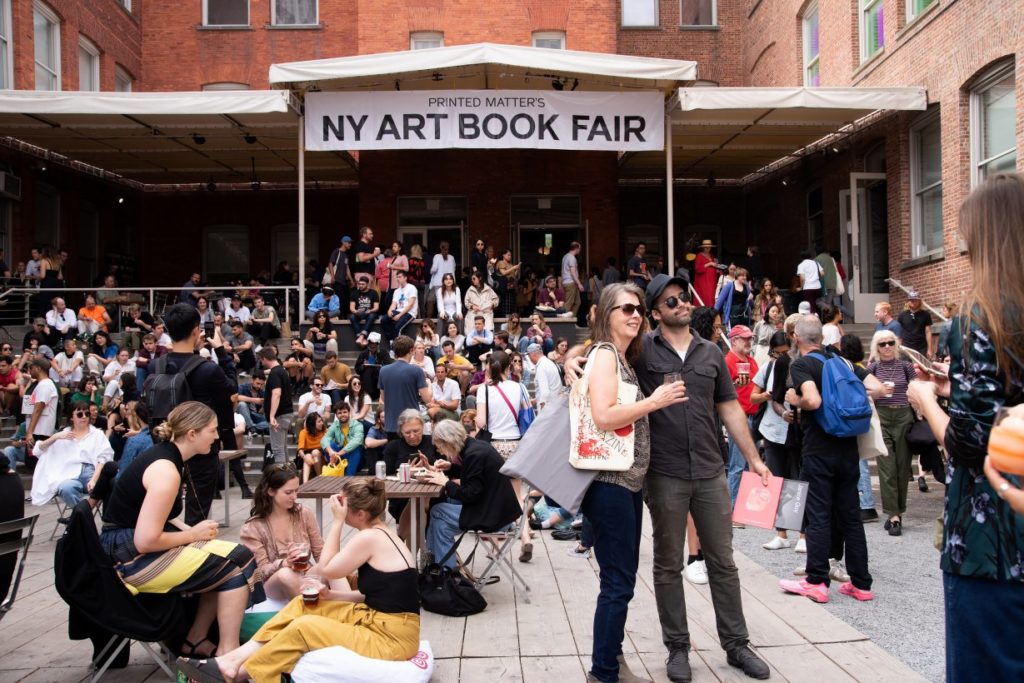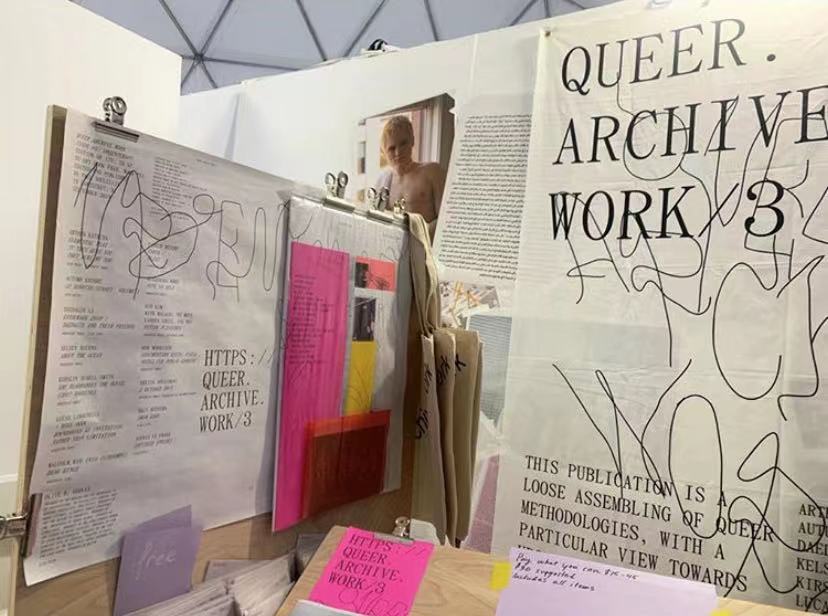Moma PS1 is one of the oldest and largest nonprofit contemporary institutions in the United States. It regularly organized an event to promote the museum. In this fall, MoMa PS1 hosted the New York annual Book Fair — Printed Matter. The event was held at MoMA PS1 sprawling campus from September 21 to 22. Printed matter’s is one of the biggest book fair of each year, which is a leading international gathering of artists’ books, celebrating the full breadth of the art publishing community. This annual book fair event draws thousands of book lovers, collectors, artists, and art world professionals. This year is the fourteenth year for Printed Matter to present the NYC art book fair.
Before I went to the event, I had several questions in my mind, which requires me to find the answer.
- Why printed matters?
- What is the age range of people who go to the book fair?
- How the exhibitors profit from their issues?
- What is the reason for people choosing to issue printed books over digital books?
- How they define “Archive”?

Regardless of the various digital reading products in the market, such as Amazon Kindle, the population of reading printed books has been descending year by year. Even textbooks are gradually going paperless nowadays. Also, among the teenagers in the 21st century, fewer and fewer teenagers are willing to read printed books. On the one hand, the price of books is always high, which is not friendly to book-lovers. On the other hand, a printed book is harder to carry around than a simple reading tablet.
This year, the Printed Matter event held over 350 booths. It’s a spectacular parade of art, fashion, zines, culture, subculture, color, sound, food, and various performance. At first, this extravaganza made me feel a little overwhelmed because of the dazzling booths. It’s really hard to find the specific exhibitor, ranging from artist collectives to antiquarian booksellers, offering unique publications. In the place of the Fair, there were visitors from different age groups and with different skin colors, but people who purchased the issues, the works, and the books mostly looked older and more knowledgeable. Younger people or teenagers were more thinking of the book fair as a weekend entertained event.

After finishing browsing most of the booths, I entered a booth with name “The Classroom”. The name was attracted me to walk into the space since I wondered what I might learn from this so-called “The Classroom.” This space is presented by a dutch artist, Ruth van Beek. She walked around and elaborated on her thoughts behind her practice in “The Classroom” to the visitors. The exhibit was a dedicated space that provided reading, screening, informal lectures, and other activities by artists, writers and designers. The program highlighted exciting new releases at the Fair and fosters dialogue around important themes for contemporary art publishing and the broader community. ‘That foster dialogue around important themes for contemporary art publishing and the broader community.’ Ruth described bookmaking as an inverse to creating an exhibition. “Making a book is more democratic. They’re for everyone.” After the talk, one of the audience asked a question that I was about to ask, “Will you ever considered making a digital book?”. Then the response from Ruth really touched my heart. “No”, she replied, “It’s the tactility of the book object.”
“Tactile” is a very appropriate word to describe the fair, and visitors were always encouraged to touch, interact and communicate with makers and exhibitors. After I walked out of “The Classroom”, my attention was attracted by a booth, “Queer, Archive, Work”, with slogans on the banner “This publication is a loose assembling of queer methodologies, with a particular view towards network culture, failure, and refutation.” The keywords, Queer and Archive, made me walk towards the booth. I asked the exhibitors Paul Sollellis who is also the co-publisher of this work, about how does he define “Archive” in his publishes from the view as freelance artists. He told me that archive is a process of gathering and collecting memories from different individuals then putting them together. Paul elaborated the issue he was selling on his booth to me that one package contains works from multiple Queer artists. There are journals, photographs, paintings and collages inside. Following his words, I asked him why he chose to do physical copies instead of a digital one. He gave me a short talk on the philosophy level by saying that this is all about the sense of existence and the weight of things. Everything has its own weight, you will know it only when you feel it. I remembered his face looked very serious, not like a seller who was trying to promote his product. I felt that he really believed that the meaning of existence is all about the feeling, or the “tactility”.

Paul’s definition of “Archive” reminds me that what make archive so significant to our lives is those archives are always meaningful to someone in the world. Like Archill says in his article, “however we define archives, they have no meaning outside the subjective experience of those individuals who, at a given moment, come to use them.” (Mbembe, 2002) Only the things we are doing contains meaning then there is the significance of existence. So is “Archive” and the printed books. Books have different meanings for different individuals. For Ruth, printed matters because of the facility of the book object. And for Paul, printed matters because the weight of the books is the proof of existence. Then I cannot help but think does printed matter to me and why. This is a question that I haven’t found out the answer.References:
References:
“Paul Soulellis, Editor – QUEER.ARCHIVE.WORK.” Printed Matter. Accessed November 3, 2019. https://www.printedmatter.org/catalog/53190/.
Mbembe, Achille. “The Power of the Archive and Its Limits.” Refiguring the Archive, 2002, 19–27. https://doi.org/10.1007/978-94-010-0570-8_2.